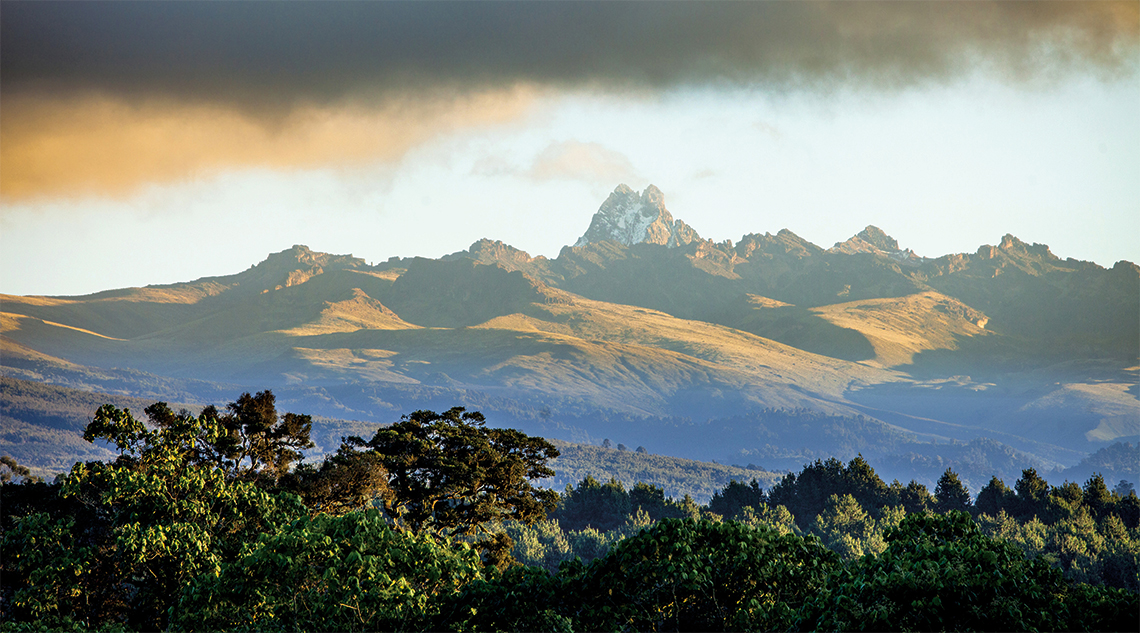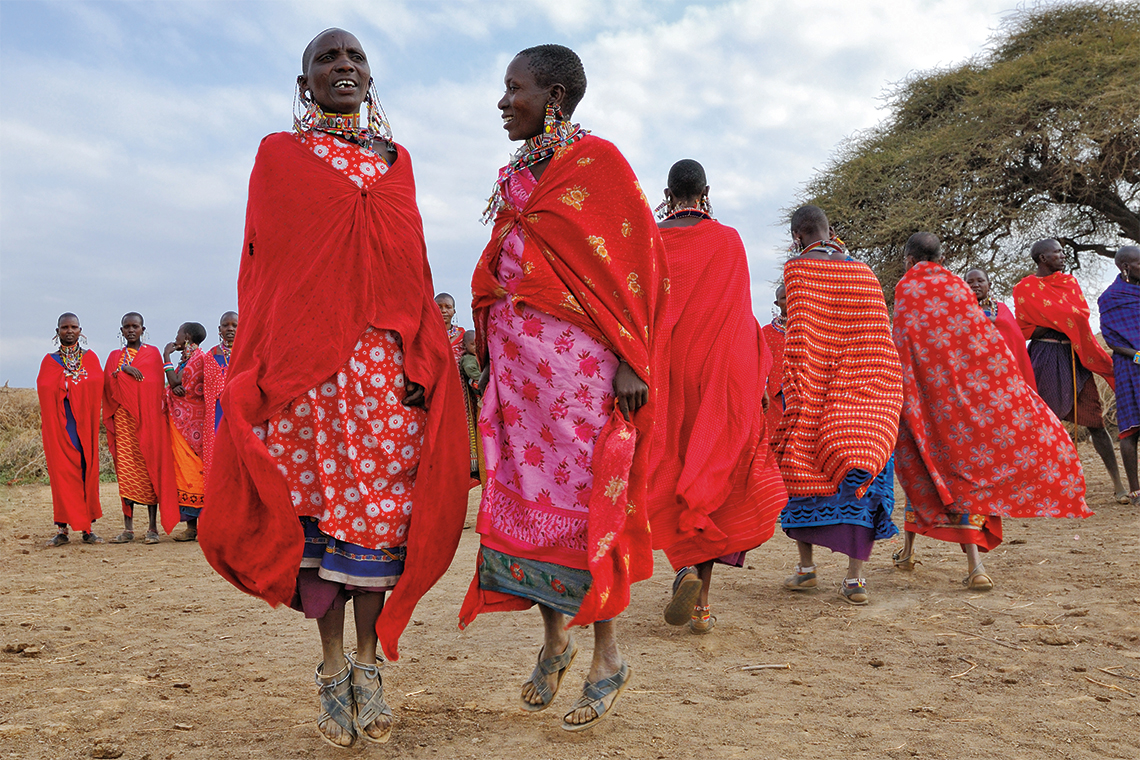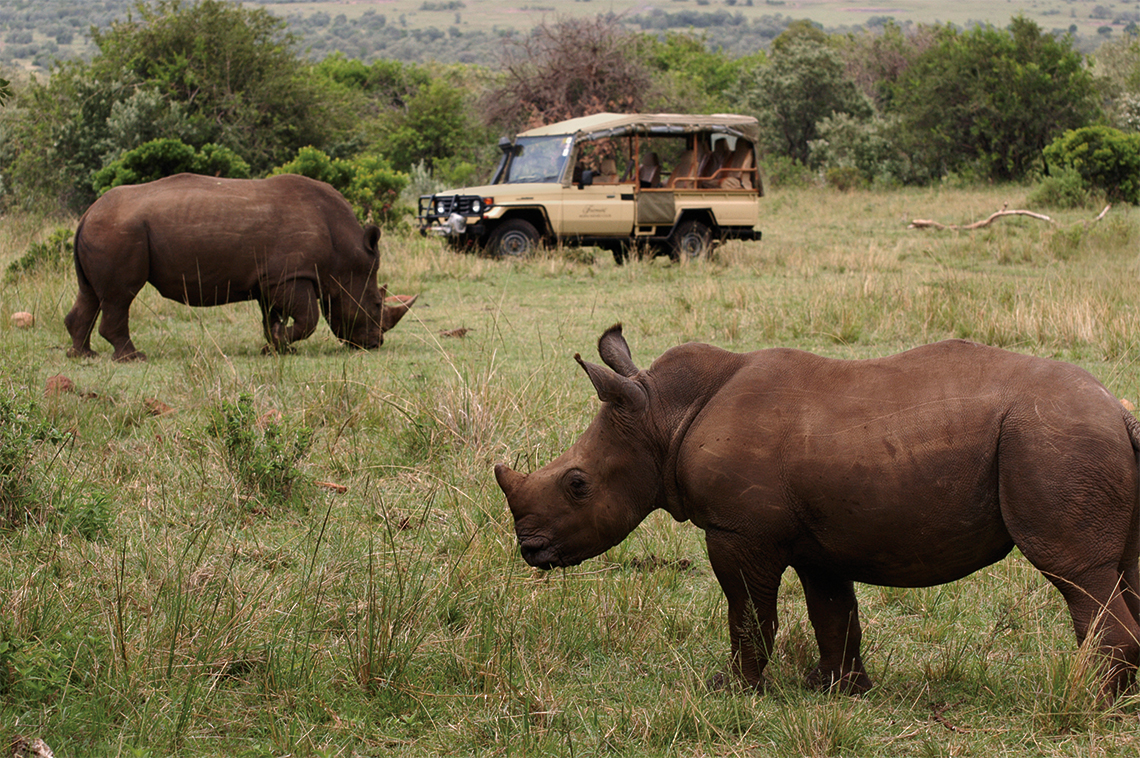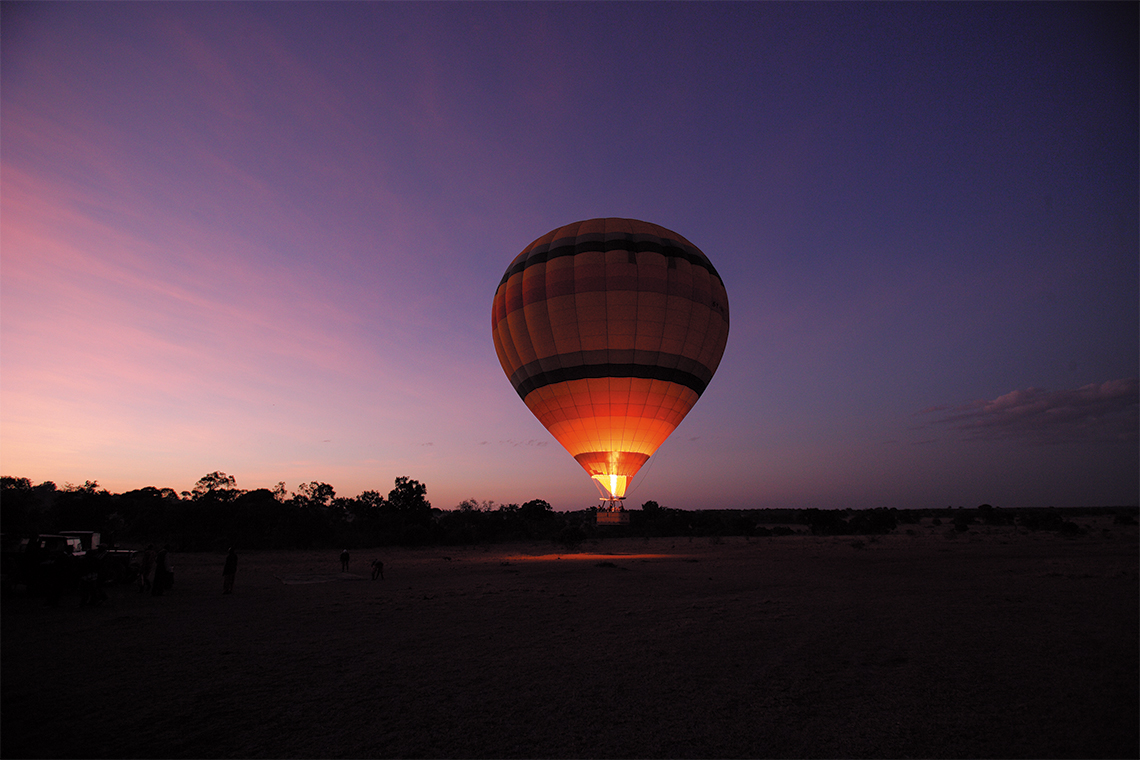If you ever start to wonder about our place on the food chain, a trip to Kenya can provide a few answers. A typical Tuesday at the office is put into perspective when you see a lioness crouched among the bushes, the shrubbery serving as simple camouflage while she patiently waits for the perfect moment to pick her prey from the family of frolicking warthogs. Then there’s the herd of elephants meandering through the Mara together, and a baby giraffe following its mother as she grazes from the trees.
But before you can take in the incredible real-life nature show, you have to get to Kenya. Bustling Nairobi is the gateway to the wilderness, and from there you can drive about three-and-a-half hours or take a 40-minute puddle jumper flight into Nanyuki, where the airstrip is something out of an Indiana Jones movie. Then it’s a quick drive to the Fairmont Mount Kenya Safari Club, which has quite the brag-worthy location: Spread over 100 lush acres, it straddles the equator and lies in the majestic foothills of Mount Kenya, with streams and traditional gardens dotting the landscape. The place exudes the golden age of safaris, thanks to black-and-white photographs and every safari animal skin you can think of adorning the walls (they’re from the bygone days when hunting was legal.)
Upon arrival, you can be whisked off for an Equator Ceremony, which is essentially a school field trip for guests. A staff naturalist leads you to a basin with a small hole in the center in the Southern Hemisphere, and then to one in the Northern Hemisphere, and demonstrates how water circulates in opposite directions on each side of the equator. After what feels like a fun elementary school science experiment, people from a local Maasai tribe give a traditional musical performance. Two tribespeople take guests by the hands and lead them one by one down a path to meet their chief. At the end of the ceremony, you’re presented with a certificate, official proof that you have crossed the equator, which can be shown to any doubters at home.
Next, ease any jetlag by taking a short walk over to the Mount Kenya Animal Orphanage, which is on-site and run by the hotel. They help rehabilitate sick or injured animals with the aim of releasing them back into the wild, with everything from monkeys to ostriches, deer, antelope, tortoise, hippos, owls, and much more calling the generous space their temporary home. They also take in animals from other parts of the world, like llamas. The conservancy serves as a research and educational facility where people can get up close and personal with the animals — think: petting a baby cheetah — making it a cross between the most exciting petting zoo and a safari.
Explore an even larger version — though there’s certainly no petting at this one — just a 45-minute car ride away at Ol Pejeta Conservancy. Go on a game drive to see the vast park, where you can catch Africa’s Big Five animals, or take a bird walk, track lions, see rare rhinos, and watch animals frolicking in the plains that go on as far as the eye can see. A guide will walk you through the separate chimpanzee sanctuary, sharing the names and stories of a few of the faces behind the fence.
Mount Kenya is shrouded in mist most of the day, so typically the only time you can get a clear vista is early in the morning. The wake-up call is worth it for the majestic view. Take advantage of the morning tranquility by going on a horseback ride through the Mount Kenya forest, crossing over a stream and through the woods. Opt for an unforgettable brunch in the slopes, where the hotel staff arranges an alfresco breakfast of champions with champagne and fresh omelets.
But no one comes to Kenya for the champagne — it’s for the safari. To experience one in all its glory, hop another puddle jumper to Mara–Ngerende to visit the Maasai Mara region in southwestern Kenya, justly considered the seventh new wonder of the world. Traditional Maasai dancers in their scarlet garb greet you as you exit the plane, sharing their music and moves. Check in at the Fairmont Mara Safari Club, which is right on the northwestern corner of the Maasai Mara Game Reserve and is the very embodiment of glamping. Tents serve as the only “rooms” on the property, with all of the rustic charm you could ask for, but with a full bathroom and electricity. Tents along the Mara River mean you’ll hear the hippos during the day while the calming sounds of the water lull you to sleep at night.
A game drive is a must at one of the most astounding wildlife reserves in the world. Seeing so many magnificent animals in their natural habitat in one day is indescribable — you might take in a pride of lions taking an afternoon nap, a leopard hiding in the bushes, and roaming buffalos. Warthogs, rhinos, wildebeests and gazelles might also be spotted. You can actually see the beams of sunlight shining down across the plains, illuminating them as the colors constantly shift with the wind and the clouds. The experienced guides seem to know exactly where to go to find the Big Five and park just in the right spot to give you the best vantage point.
For the top vista – literally – take a hot air balloon safari. You’ll have a bird’s eye view of the herds crossing the Mara, float over a Maasai village and get a true sense of the stunning landscape. Once you touch down, a bush breakfast is served. Later, you can visit a Maasai village and mingle with the locals for a cultural experience that you won’t get anywhere else.
For the ultimate Out-of-Africa moment, enjoy a sundowner at the Aitong Hills. You’ll feel like Hemingway throwing back a cocktail as the sun goes down over the open sky. As the sky changes from blues and pinks to oranges and yellows, you’ll bask in nature’s light show.
You might think of that cotton candy-hued sky once you’re back at home, looking at your own familiar skyline. Perhaps you’ll recall the songs of the Maasai as you scroll through your iPod. Or maybe the bright flavors of the fresh game from a bush dinner will come back as you cook an evening meal with your family. The sights, sounds and smells of Kenya are sure to travel back with you, no matter where home is. Those memories will remind you how small and yet vast the world is, just like Kenya itself.

















